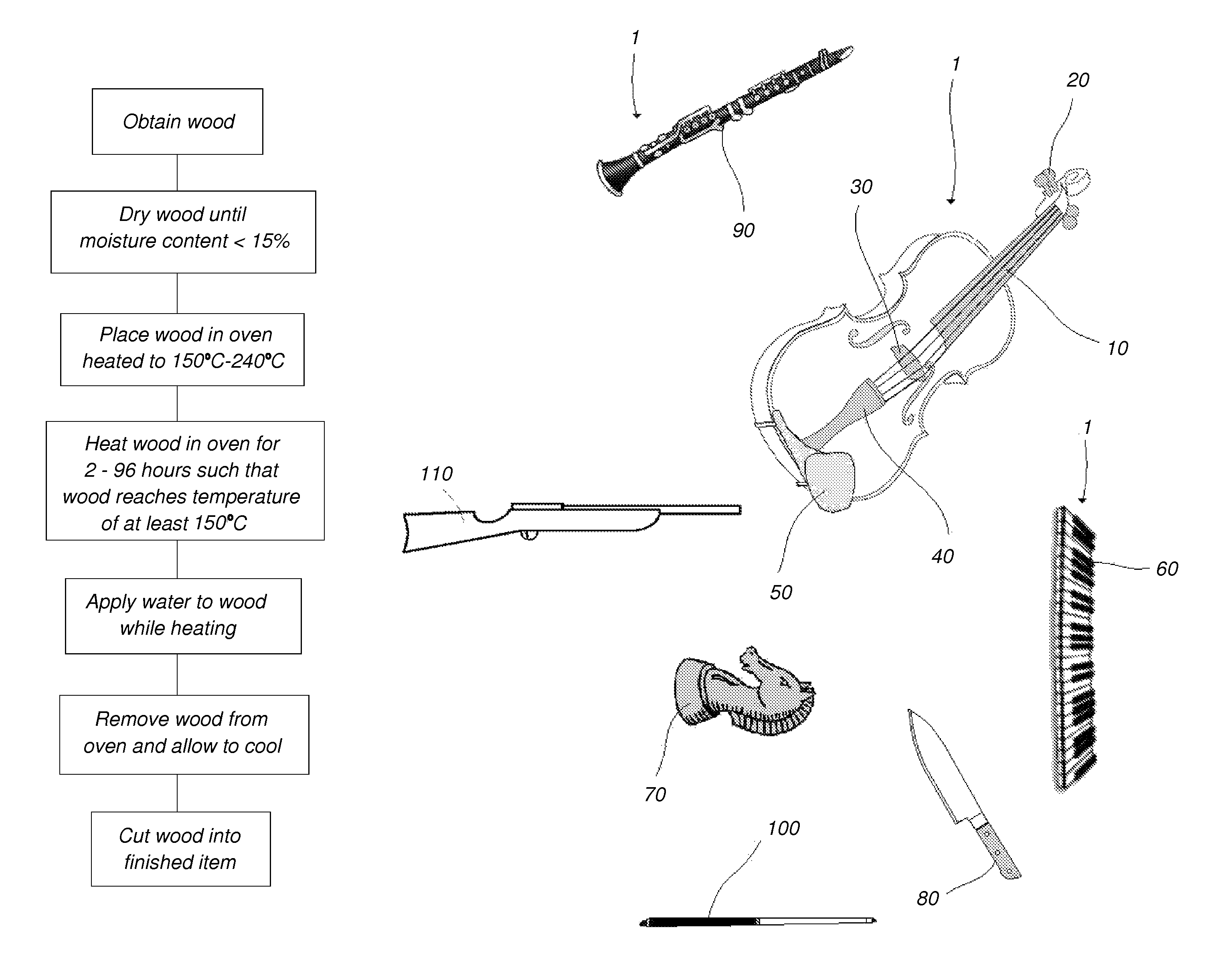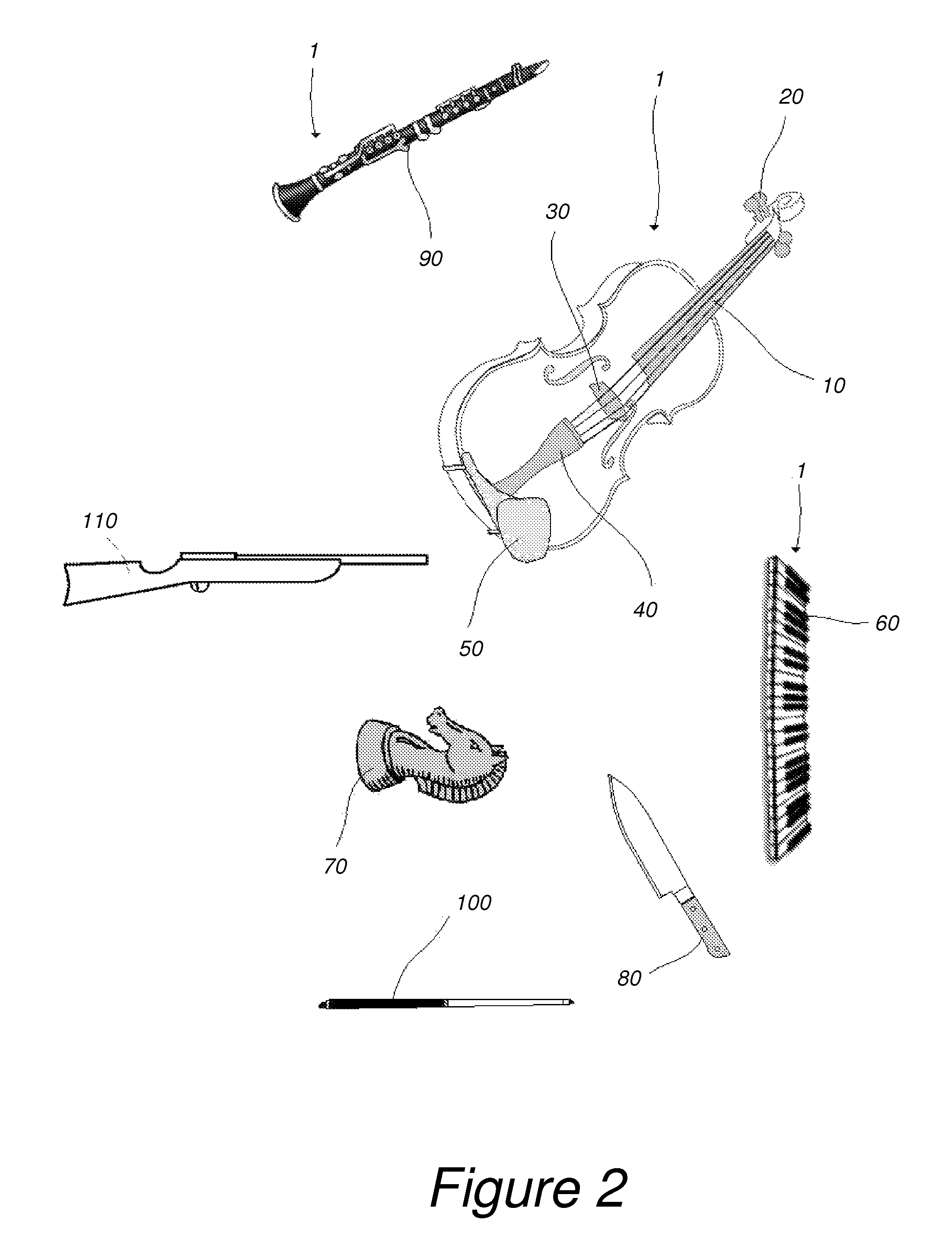Method of treatment of wooden items
a treatment method and technology for wooden items, applied in the field of wooden items, can solve the problems of not addressing swelling and shrinkage issues, affecting the accuracy of firearms, and reducing the use of wood, and achieve the effect of reducing the color of wood
- Summary
- Abstract
- Description
- Claims
- Application Information
AI Technical Summary
Benefits of technology
Problems solved by technology
Method used
Image
Examples
Embodiment Construction
[0036]The method disclosed herein is for the treatment of wood to be used in the manufacture of wooden items, for example, components of musical instruments 1, gunstocks 110, tool handles 80, and the like. The basic method comprises the following steps:
[0037]Step A. obtain a piece of wood of an appropriate species of tree having certain characteristics desirable for the manufacture of wooden items, namely, hardness, strength, and stability, and the wood should be aesthetically pleasing.
[0038]Suitable species of tree include African Blackwood (Dalbergia melanoxylon), African Zebrawood (Microberlinia brazzavillensis), Afzelia (Afzelia africana), Agba (Gossweilerodendron balsamiferum), American Basswood (Tilia americana), American Beech (Fagus grandifolia), American Elm (Ulmus americana), American Hornbeam (Carpinus caroliniana), American Sycamore (Platanus occidentalis), Applewood (Malus sylvestris), Arizona Cypress (Cupressus arizonica), Australian Blackwood (Acacia melanoxylon), Aus...
PUM
| Property | Measurement | Unit |
|---|---|---|
| temperature | aaaaa | aaaaa |
| temperature | aaaaa | aaaaa |
| temperature | aaaaa | aaaaa |
Abstract
Description
Claims
Application Information
 Login to View More
Login to View More - R&D
- Intellectual Property
- Life Sciences
- Materials
- Tech Scout
- Unparalleled Data Quality
- Higher Quality Content
- 60% Fewer Hallucinations
Browse by: Latest US Patents, China's latest patents, Technical Efficacy Thesaurus, Application Domain, Technology Topic, Popular Technical Reports.
© 2025 PatSnap. All rights reserved.Legal|Privacy policy|Modern Slavery Act Transparency Statement|Sitemap|About US| Contact US: help@patsnap.com



